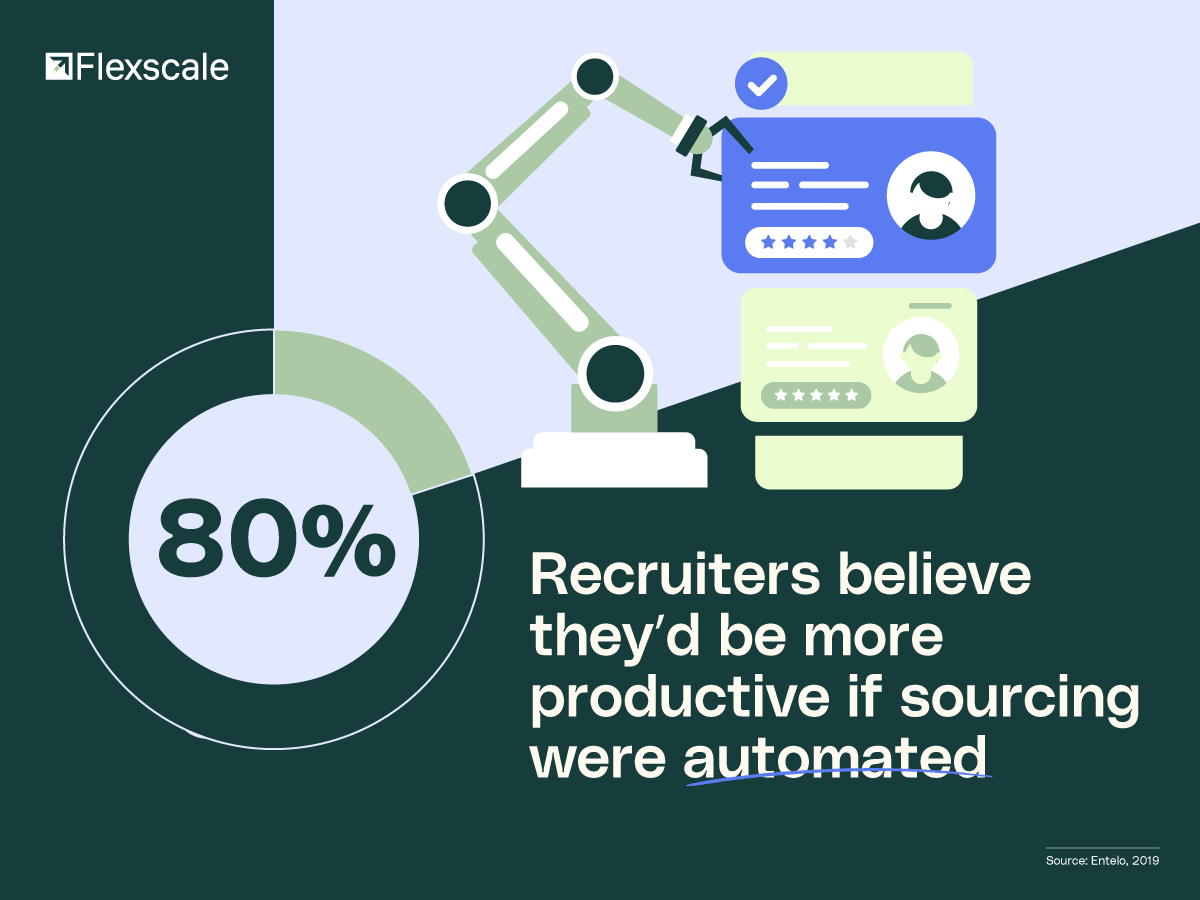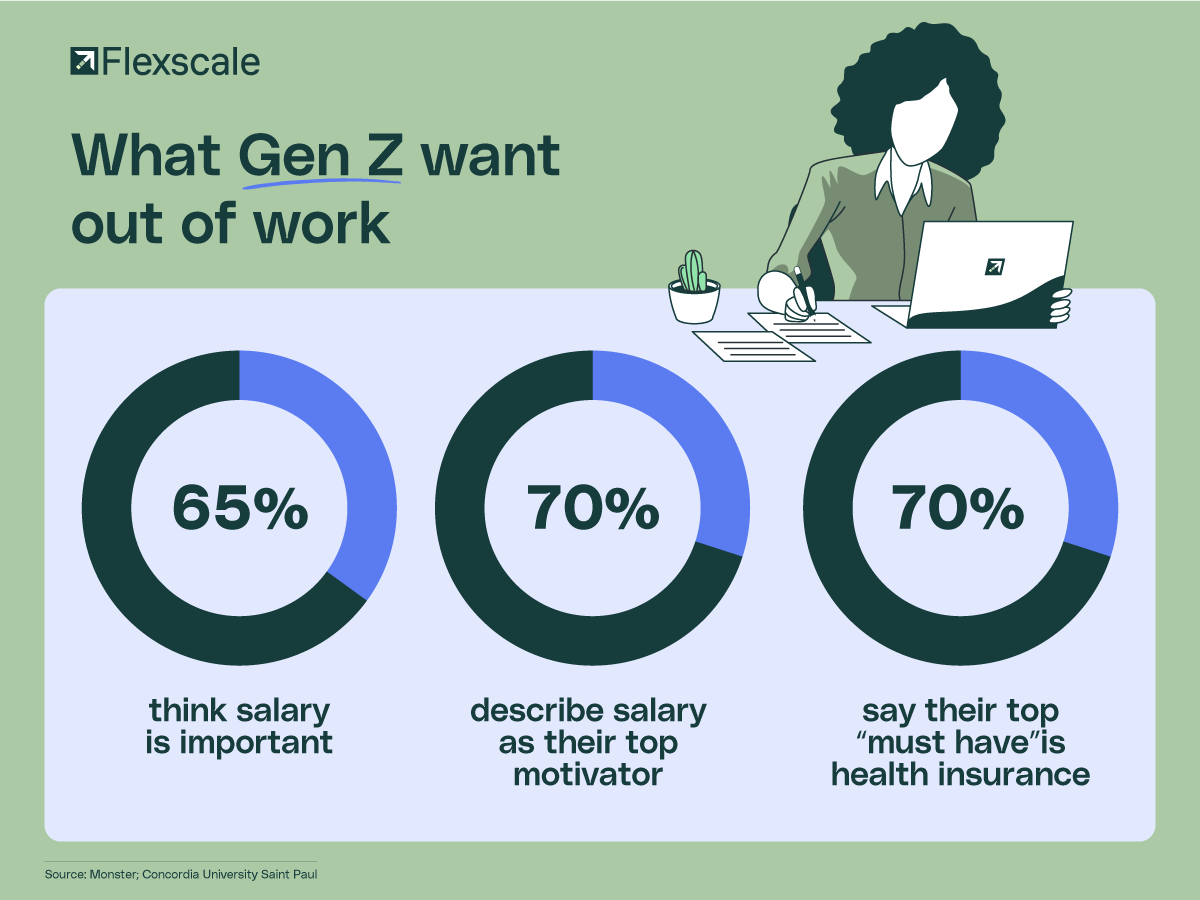10 Recruitment Trends in 2025 You Can't Afford to Miss
Explore the top hiring trends for 2025, from Gen Z's expectations to AI-driven recruitment tools. Learn how flexibility, salary transparency, and more are changing the recruitment game.

Hiring isn’t what it used to be. If you’ve been feeling like finding the right talent is more challenging than ever, you’re not alone. High turnover rates, candidates ghosting interviews, and fierce competition for top talent can leave you wondering if your hiring strategies are enough to keep up.
And let’s be honest—ignoring these shifts isn’t an option. Falling behind in your recruitment approach can mean missing out on game-changing hires, struggling with unengaged employees, or dealing with the frustration of roles staying vacant for months.
The job market is always evolving, but the year ahead is set to bring a host of innovative recruitment trends in 2025 that will redefine hiring as we know it. From automation to skills-based hiring, companies need to understand these trends and adapt their strategies to stay competitive. Here's an in-depth look at what to expect and how you can integrate these predictions into your hiring processes.
1. Automation in Recruitment
Automation is transforming how recruitment tasks are managed by taking over repetitive responsibilities like resume filtering, scheduling interviews, and conducting initial candidate assessments. This doesn’t mean recruiters are being replaced; instead, they can focus more on the human aspect of hiring, such as building genuine connections and evaluating cultural fit. For example, AI tools can identify top applicants based on predefined criteria, drastically cutting the time it takes to shortlist candidates. However, companies must ensure these systems are designed to avoid bias, ensuring fair opportunities for all.

2. Expanding Remote Work and Global Talent Pools
Remote work has transitioned from a temporary solution to a long-term recruitment strategy. With fewer geographical barriers, companies now access talent from across the globe, benefiting from diverse perspectives and specialized skill sets. This global reach also means adapting to different cultural expectations and time zones, which requires strong communication and flexibility. Companies like Flexscale are helping businesses navigate this shift by connecting you with talented professionals from around the world, making it easier to build diverse, high-performing teams.
3. Salary Transparency
The demand for salary transparency is rising as more candidates prioritize fairness and clarity in compensation. Several countries, including Canada and the U.S., have implemented pay transparency laws requiring employers to disclose salary ranges in job ads. Salary transparency has also become a critical factor in attracting and retaining talent, especially as Gen Z enters the workforce. A standout feature of Gen Z hiring trends is their insistence on knowing salary details upfront before applying for jobs. For this generation, transparency signals fairness, equality, and a company culture they can trust. SHRM found that being upfront about pay makes companies more appealing to job seekers. In fact, 70% of employers who include salary ranges in their job postings say they get more applications as a result. This highlights just how important clear compensation details are.

4. Emphasis on Flexible Work Arrangements
One of the hiring trends you should also consider is implementing flexible work arrangements. Flexibility used to be the most sought-after perk but now, it’s becoming a must-have for attracting and retaining talent. Employees increasingly expect hybrid models, reduced workweeks, or adjustable schedules to maintain work-life balance. This shift caters to professionals who value their personal time as much as their careers. A study found that workers prioritize flexibility over pay when considering job opportunities. By implementing flexible arrangements, companies can not only attract but also retain top talent, building a more satisfied and loyal workforce.
5. Diversity, Equity, and Inclusion (DEI)
Diversity, Equity, and Inclusion (DEI) initiatives are now at the forefront of recruitment efforts. Companies that prioritize creating inclusive environments where everyone has a fair chance to thrive are more likely to attract top talent. Beyond hiring for gender and race, DEI focuses on creating an environment where everyone feels respected and valued, regardless of their background. Job seekers today, especially younger generations, are drawn to companies that prioritize fairness and inclusion. For employers, implementing this talent acquisition trend can lead to better collaboration, creativity, and employee retention, helping your organization thrive in an increasingly diverse world.
6. Employer Branding
Your employer brand is how the world sees your company as a place to work, and it plays a huge role in attracting top talent. It's about more than just offering a paycheck—it's about promoting a company culture where employees feel valued, supported, and aligned with your mission. A strong employer brand makes job seekers excited to apply and stay with you long-term. When employees are proud of where they work and genuinely believe in the company’s values, they naturally become your best advocates, helping to attract even more great talent.
7. Proactive Candidate Engagement
Gone are the days of waiting for candidates to apply. Companies are shifting to proactive recruitment by building talent pipelines and nurturing relationships with potential candidates. This might involve engaging through social media, hosting networking events, or simply maintaining contact with past applicants. Personalized and consistent communication keeps potential hires interested, ensuring businesses are prepared when new roles open.
8. Gen Z Entering the Workforce
As Gen Z steps into entry-level roles, they’re bringing new expectations. A study found that Gen Z’s approach to work habits is remarkably practical and money-minded compared to other generations. This generation demands fast, digital-first hiring processes, valuing speed and transparency. They’re also vocal about work-life balance and sustainability, pushing companies to rethink their practices. Employers catering to the Gen Z hiring trends—through mobile-friendly applications or flexible working options—are more likely to attract and retain Gen Z talent.

9. AI in Recruitment: Opportunities and Challenges
Artificial intelligence is not an emerging trend in talent acquisition. It has been the new normal in the past years and became a game-changer in recruitment, offering tools for smarter, data-driven hiring. However, AI isn’t without challenges. There’s a growing concern over algorithmic bias, which could inadvertently disadvantage certain candidates. To make the most of AI, companies must combine these tools with human oversight, ensuring ethical practices and fair outcomes.
10. Skills-Based Hiring
The traditional emphasis on degrees is fading, with companies prioritizing practical skills and certifications. This shift is particularly evident in tech roles, where experience often outweighs formal education. Partnering with boot camps and offering skill-based assessments are excellent ways to identify top talent without relying on outdated criteria.
Looking ahead to 2025, recruitment is all about adapting to what job seekers expect today—flexibility, transparency, inclusivity, and a strong company culture. If you can offer a workplace where people feel valued and have the freedom to thrive, you’ll stand out in a crowded job market. Embracing these hiring trends is about attracting the best talent, keeping them happy and engaged for the long haul. By focusing on these key areas, you’ll be in a stronger position to build a team that’s not just skilled, but also loyal and motivated.
Frequently Asked Questions About Recruitment Trends 2025
What is the latest recruiting trend that you noticed?
One of the biggest recruitment trends right now is the shift toward flexible work arrangements. More and more companies are offering remote or hybrid work options, which job seekers have come to expect. More than convenience, flexibility plays a huge role in employee satisfaction and retention, and companies that provide it are seeing greater interest from top talent.
What is the next big thing on the horizon for recruiting?
AI and automation are quickly becoming the next big thing in recruitment. These tools can help streamline tasks like screening resumes or scheduling interviews, which saves recruiters a lot of time. While AI can’t replace the human element, it allows recruiters to focus on what really matters—building relationships and making the right hiring decisions.
What is the most common method for attracting and recruiting?
Employee referrals still top the list for the most effective recruitment method. Employees who refer people to the company are often more aligned with the company culture, making it easier for new hires to fit in. That said, social media and job boards also play a big role in reaching a wide range of candidates, especially when combined with employer branding efforts.
What is gamification in recruitment?
Gamification is a fun and interactive way to assess candidates during the recruitment process. It involves using game-like elements, such as challenges or quizzes, to evaluate how well candidates perform under certain conditions. This advanced tech hiring trend helps recruiters learn more about a candidate’s skills and how they approach problem-solving, all while giving candidates a more engaging experience.
Which is the most effective source of recruitment?
Employee referrals are often the most effective way to find new talent. Candidates who come through referrals tend to be more familiar with the company culture and are likely to fit in better. Plus, referral programs usually save time and money in the hiring process, making them a win-win for both employers and employees.
Turn payroll pressure into profit growth
Let Flexscale help you reclaim margins, unlock capacity, and focus on growth.
Get Started

.png)
.png)
.png)
